Manhae Village (만해마을)
14.7 Km 28971 2021-07-29
91, Manhae-ro, Inje-gun, Gangwon-do
+82-33-462-2303
Manhae Village was established as a training center and memorial hall for national activist Monk Manhae Han Yongun, revered for his literary and philosophical inspiration, as well as his devotion to the nation and Korean people during the Democracy Movement.
Sokcho Beach (속초해수욕장)
14.8 Km 148075 2024-04-08
190 Haeoreum-ro, Sokcho-si, Gangwon-do
Sokcho Beach opened in 1976 and is one of Korea's representative beaches. It is close to Sokcho's downtown, and the express bus terminal is also within walking distance, so transportation is convenient. With clear sea water, shallow depth, and a gentle slope, Sokcho Beach attracts visitors from all over the country every summer. Especially during the high season in July and August, the beach is so cluttered that there's nowhere to walk. There are many restaurants and facilities near the beach. And there is a pine forest with a small park and a trail behind the beach. The sculptures installed throughout the sandy beach are a sight to see regardless of the season, so tourists continue to visit even after the holiday season. There are sculptures including the Korean initials "ㅅㅊ" symbolizing Sokcho, a large compass showing directions to countries around the world, and a dolphin sculpture. The large picture frame with the blue sea in the background and the Stairway to Heaven are the most popular photo spots here. The beach often serves as a venue for a variety of events like performances and festivals.
Sokcho Tourist & Fishery Market (Formerly, Jungang Market) (속초 관광수산시장 (구: 중앙시장))
14.8 Km 30565 2022-12-21
12, Jungang-ro 147beon-gil, Sokcho-si, Gangwon-do
+82-33-653-8433
The Sokcho Tourist Fish Market, an essential tourist attraction in Sokcho, offers all sorts of things. The market includes a large building with a basement and two floors above ground and specialized alley stores. The building consists of shops for clothes, daily necessities, and other general products; the Nonghyup Hanaro Mart; and the Raw Fish Center, which sells fresh live fish and seafood at a reasonable price. The alley market is divided into several alleyways specialized in each product such as a vegetable & fruit alley, a chili pepper alley, a blood sausage alley, a salted seafood market alley, a chicken alley, and so on. Especially, fresh agricultural and fish products, and dried seafood products will draw visitors’ attention. The chicken alley is popular among tourists with various crunchy and spicy dak gangjeong (glazed fried chicken bites) stores, which offer their own taste. The alley market has a rain protection facility and a clean and pleasant environment, and a wide parking lot for visitors’ convenience.
Abai Village Ferry (아바이마을 갯배)
14.8 Km 44806 2022-12-21
39, Jungangbudu-gil, Sokcho-si, Gangwon-do
+82-33-635-2003
Gaetbae (boat without engine) is an exotic means of transportation to cross the Abai Village at the mouth of Cheongchoho Lake. It is a rapid means of traveling between downtown Sokcho and Abai Village along the 50 m-long waterway. This small barge-style boat without an engine can be run by pulling the wire manually. When fixing the solid steel wire on both sides of the waterway and pulling it hard with a hook, a boat moves forward slowly. As there is no boatman, passengers need to work together to move the boat. It takes about 5 min to cross the water by boat. This unique experience still attracts many tourists to Sokcho. Furthermore, it is known as the filming location for the Korean TV drama Autumn in My Heart, so many tourists from Japan and China visit the place.
Naksansa Temple (낙산사)
14.8 Km 61805 2022-12-22
100, Naksansa-ro, Yangyang-gun, Gangwon-do
+82-33-672-2447
This ancient temple was built in the 11th year of King Munmu’s reign of Silla (671) by the Buddhist monk Uisang. Naksansa Temple is one of the foremost sights of Yangyang, and one of the most historic sites in the region. Along with Ganghwa’s Bomunsa Temple and Namhae’s Boriam Hermitage, it is said to be one of the three centers of the cult of Avalokitesvara in Korea. Its handsome view overlooking the East Sea has earned it a spot in the Eight Sights of Gwandong (eight famous sights in Yeongdong region of Gangwon-do), documented throughout the ages in many classic literature and poetry. Today’s Naksansa Temple is a product of many restorations and expansions, and has many examples of cultural heritage within its walls. There is a 16 meter-tall statue of the Avalokitesvara Bodhisattva to Uisangdae, a pavilion built to overlook the sunrise over the East Sea on a coastal cliff, Hongnyeonam Hermitage, built over the crashing waves, Seven-story Stone Pagoda of Naksansa Temple, Yangyang (Treasure No. 499), a Joseon-era pagoda with Goryeo-era style, and Stupa, Stele, and Reliquaries of Naksansa Temple, Yangyang (Treasure No. 1723), including a number of sarira. A mountain fire in 2005 resulted in the loss of 20 buildings, including the building that housed its bronze bell (formerly Treasure No. 479 of Korea). The temple also operates templestay programs available through its website.
ARUNA (아루나)
14.9 Km 0 2024-02-16
85 Cheonghohaean-gil, Sokcho-si, Gangwon-do
Located on Sokcho’s Cheonghohaean-gil, ARUNA is renowned for its stunning ocean views and rooftop area. The first floor of the café features a large window wall on one side, offering expansive views of the sky and the East Sea. ARUNA’s selection of coffee beverages and desserts, including matcha, scones, and cookies, are well-received by visitors. Additionally, the café is conveniently located near several tourist attractions such as Sokchohaebyeon Beach, Sokcho Eye (Ferris Wheel), and Abai Village.
Café ONE FINE DAY (어느멋진날카페)
14.9 Km 0 2024-02-16
54 Cheongho-ro 2-gil, Sokcho-si, Gangwon-do
Café ONE FINE DAY boasts a stunning view of Sokcho Beach, visible right before it. Both the first and second floors feature expansive window walls that offer unobstructed views of the beach, while the third floor provides a view of the Sokcho Eye. The café's signature menu includes the "Sokcho Eye corn latte," named after the Ferris wheel visible from the café, and the "Ferris wheel bread." Other popular offerings include fresh pineapple juice and the unique Cotton candy latte.
Abai Village (아바이 마을)
14.9 Km 42432 2021-04-09
122-1, Cheongho-ro, Sokcho-si, Gangwon-do
+82-33-639-2690
Located in Cheongho-dong, Abai Village bears a history of displaced people’s distress. The village was formed by refugees of the Korean War from North Korea, mainly from Hamgyeong-do Province. The word “abai” is a dialect of Hamgyeong-do that means a friendly old man like a grandfather. Visitors to Abai Village can get a sense of displaced people’s life and story, which fade away into a chapter of history. Although it has lost its original appearance now, old shacks without a gate still remain here and there. Mural paintings on the wall show the sentiment of nostalgia about their hometown and express sorrow and hard life of displaced people, who lived from hand to mouth by fishing and doing physical labor. The original houses built by refugees in the village were restored into the Refugee Village at the Sokcho Museum. Abai Village is also known as a filming location for the Korean TV drama Autumn in My Heart, attracting a lot of visitors and becoming a major attraction in Sokcho. The restaurant alley is packed with cafes and North Korean food restaurants serving local dishes such as Hamheung-style cold buckwheat noodles, stuffed squid, and North Korean-style sausage soup.
Yeongnangho Lake (영랑호)
14.9 Km 15498 2022-12-21
140, Yeongnanghoban-gil, Sokcho-si, Gangwon-do
+82-33-639-2690
Yeongnangho Lake is a deep and large lake with a circumference of 7.8 km, an area of about 1.2 km2, and a depth of over 8 m, formed by the development of coastal dunes. The source water originates from the Jangcheoncheon Stream, passing through the lake, and goes to the East Sea via the waterway under the Yeongnanggyo Bridge. The lake is adjacent to the areas of Jangsa-dong, Yeongnang-dong, Dongmyeong-dong, and Geumho-dong. The pleasant trail is also established around the lakeside, surrounded by the beautiful scenery of cherry blossoms, azaleas, and reeds. According to Samguk yusa (Memorabilia of the Three Kingdoms), the name of the lake comes from Silla’s hwarang (elite warrior group in Silla) member named “Yeongnang.” After training at Geumgangsan Mountain, Yeongnang passed this lake on the way to get to the martial arts competition. As he was so taken by the splendid landscape, however, he forgot about the competition and stayed here for a long time. As the old record says, Yeongnangho Lake boasts outstanding scenery. Beombawi Rock, in particular, evokes visitors’ admiration as one of the Eight Sights of Sokcho. The rock, which resembles the shape of a tiger crouching down, has an aura of mystery. The nearby tourist attractions also include Gwaneumam Rock, which is known for the strange rocks and bizarre stones, Bogwangsa Temple, and the Wetland Eco Park, which is located in the west of the lakeside.
Dancheon Sikdang (단천식당)
14.9 Km 24897 2024-02-16
17 Abaimaeul-gil, Sokcho-si, Gangwon-do
033-632-7828
Dancheon Sikdang specializes in abai sundae (North Korean sundae), a sundae dish from Hamgyeong-do Province of North Korea. Abai sundae is made by stuffing pork large intestines with seonji (blood) and sweet rice, followed by steaming. Currently operated by the third generation, the restaurant also offers dishes like myeongtae hoe naengmyeon (cold buckwheat noodles with raw pollack), ojingeo sundae (stuffed squid), and gajami sikhae (salted and fermented plaice). It is located in Abai Village, an area established by war refugees from North Korea during the Korean War.
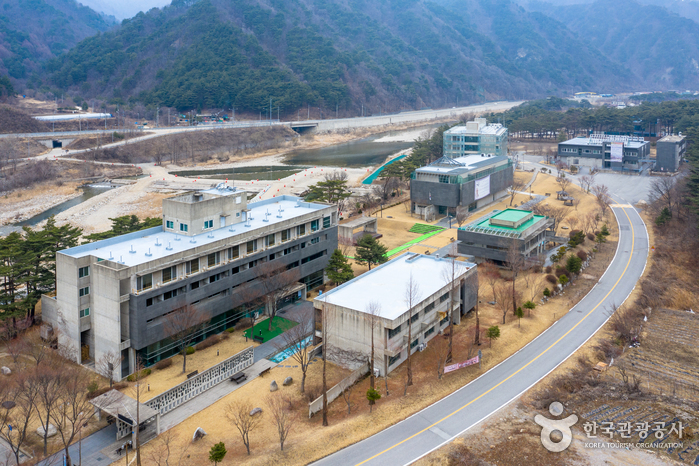

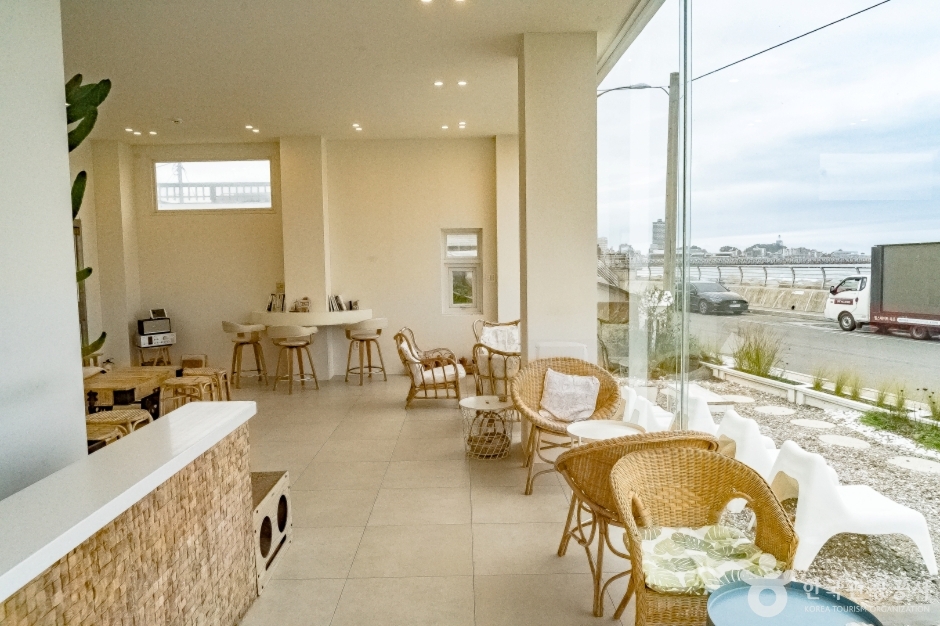
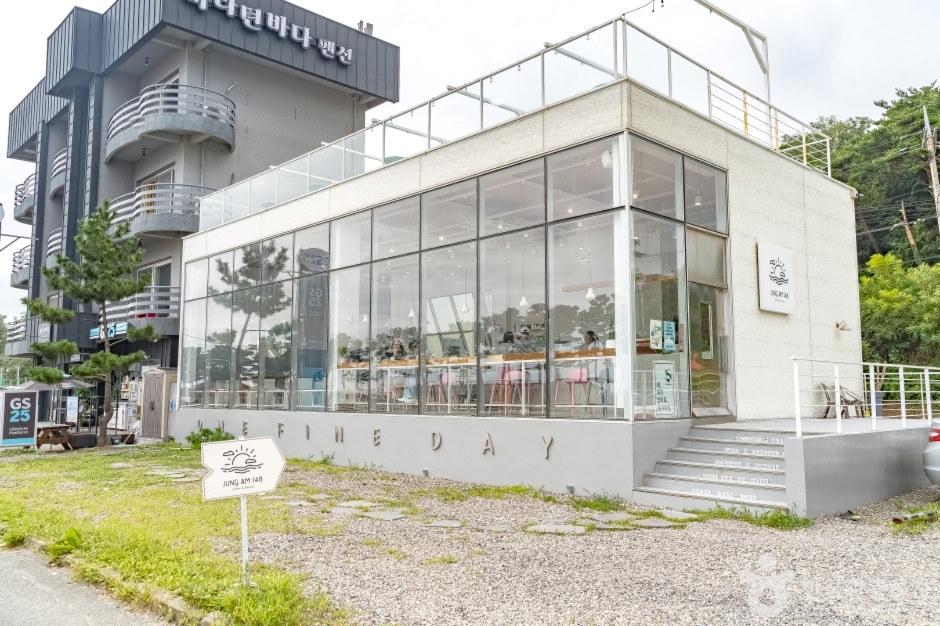
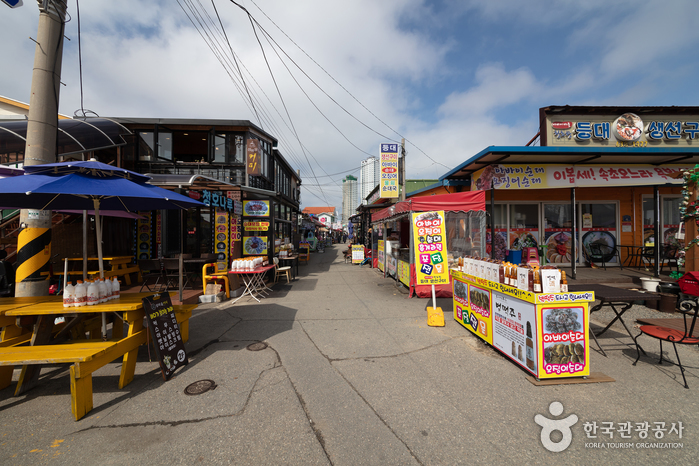
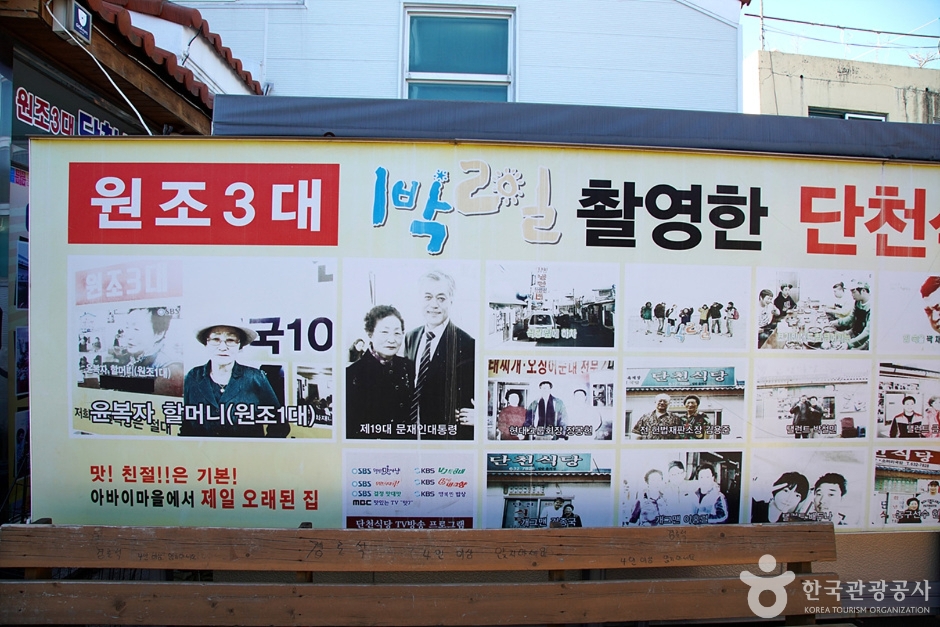
 English
English
 한국어
한국어 日本語
日本語 中文(简体)
中文(简体) Deutsch
Deutsch Français
Français Español
Español Русский
Русский